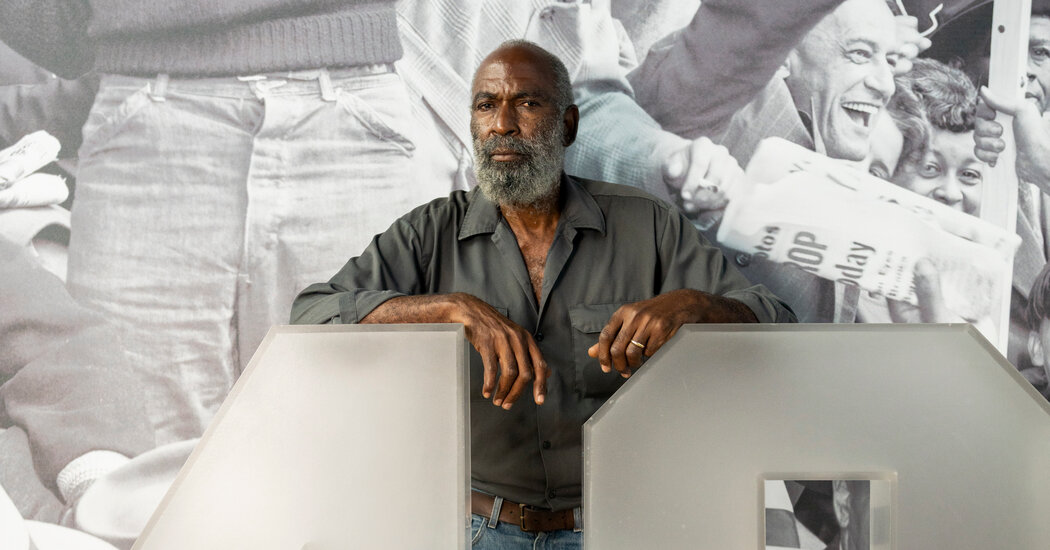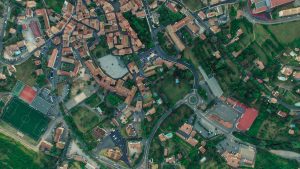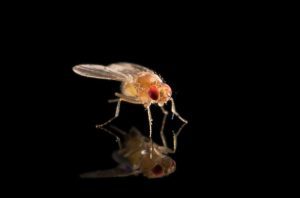
Jackie Robinson’s family home in Stamford, Conn., had a den featuring trophies, artifacts and a big scrapbook commemorating his many achievements. David Robinson, his son, fondly recalled in an interview how one wall held photos and plaques depicting his father’s success in sports. Another wall — with a collection twice as big — highlighted his father’s social activism, something of far greater significance to Jackie Robinson and his family.
The ethos evoked in that den, emphasizing social activism over sports, is carried on, along with many of the same artifacts, to a new museum in Lower Manhattan dedicated to the legacy of one of the most important figures in American history.
The new Jackie Robinson Museum — New York City’s first museum dedicated largely to the civil rights movement — will host a ribbon-cutting ceremony Tuesday and open its doors to the public on Sept. 5, allowing visitors to soak in the legacies of Robinson and his widow, Rachel, in a much larger, modernized version of the family den, with the same spirit of using sports as a vehicle to promote social progress.
“But the collection is a thousand times bigger,” said David Robinson, who lives in Tanzania but was in New York for his mother’s birthday and the opening of the museum. “Some of the things we grew up with now have huge historical significance, and the museum is a place for everyone to see it, and much, much more. It will be a marvel of modern information delivery.”
Rachel Robinson, who turned 100 last week, will cut the ribbon on an institution she has long envisioned as a center for people to learn about the courageous work her husband did, hand in hand with her, to help transform American society via the integration of Major League Baseball, and many other ventures.
Jackie Robinson, who had been a young star with the Kansas City Monarchs in the Negro leagues, broke the color barrier in the white major leagues on April 15, 1947, when he debuted for the Brooklyn Dodgers of the National League. He immediately became a symbol for the hope of racial equality in the United States, but as museumgoers will discover, Robinson’s tireless work to tear down barriers began long before then. And they continued long after he retired as a player following the 1956 season.
Visitors will see that while Robinson was in the military during World War II, he successfully pushed for Black soldiers to be allowed into an officer training program, which he completed in 1943 and emerged as a Second Lieutenant. They will learn how, after Robinson retired from baseball, he broke barriers in advertising, broadcasting and business, how he started a bank to help Black citizens, so often excluded from basic loans, secure capital.
They will also be inspired, the museum’s organizers hope, by his and Rachel’s work alongside many pillars of the civil rights movement, including the Rev. Dr. Martin Luther King Jr., Medgar Evers and Whitney Young, people David Robinson remembers visiting with his parents at the house in Stamford.
“It was such an important period of history that the museum encapsulates,” David Robinson said. “If we don’t have a remembrance of that struggle, we lose touch with a significant period of American history that can help guide us today and it is a tribute to all the people who have taken my mother’s desire and made it happen.”
One of those people is Della Britton, the tireless president and chief executive of the Jackie Robinson Foundation, a nonprofit organization started by Rachel Robinson to continue her husband’s legacy through education and university scholarships for 242 students each year.
The museum has already begun online programs with schools across the country and, in sync with Rachel Robinson’s ultimate goal, hopes to become a beacon that will encourage and support the next wave of leaders in the fight for social justice.
“When we first undertook this mission to build the museum, Rachel told me, ‘I don’t want it to simply be a shrine to Jack, I want it to be a place that brings people together and continues the dialogue around the most difficult issue of our society, then and now, which is race relations.’” Britton said. “That is what has kept me here the last 18 years. And as we’ve evolved politically during that time, it seems even more compelling and more important.”
Getting the museum up and running has been a challenge. Funding issues dating back to the financial crisis of 2008, followed eventually by the pandemic and subsequent worldwide supply-chain problems, Britton said, forced the museum to delay the opening for years. The foundation raised $38 million of the $42 million it sought to build the museum, of which $25 million went to capital investment for construction.
Now, the museum is finally ready to open, complete with 4,500 artifacts and 40,000 historical images. It features more than 8,000 square feet of permanent exhibition space in a prime location on the border of TriBeCa, and another 3,500 square feet for classroom space and a gallery.
A study conducted on behalf of the museum in 2018 estimated between 100,000 and 120,000 visitors per year, Britton said, but the museum is bracing for more, especially since there is currently no other museum like it in New York.
“In a city where Lady Liberty welcomes you, there is no other civil rights museum,” Britton said. “That is significant.” The museum boasts a compelling collection of artifacts and exhibits that connect Robinson’s athletic success to his pioneering civil rights work. Visitors will be able to see the letters he exchanged with Branch Rickey, the Dodgers president and general manager who originally signed Robinson, that reflect their complex relationship.
They can also learn about some of Robinson’s friends and allies, including Ralph Branca, the Dodgers pitcher who was the first teammate to befriend Robinson, and Hank Greenberg, a Jewish slugger for the Detroit Tigers who experienced antisemitism in baseball and was the first opposing player to offer words of support and encouragement to Robinson. There is an exhibit on John Wright, a lesser-known Negro leagues pitcher whom Rickey signed three months after he signed Robinson. Along with Robinson, Wright was the victim of withering racist abuse in the minor leagues. He eventually returned to the Homestead Grays without having had the chance to break in with the Dodgers.
The museum has also secured a uniform and bat that Robinson used in 1947, his Rookie of the Year Award, his National League Most Valuable Player Award from 1949, his original Hall of Fame plaque, his Presidential Medal of Freedom and many other items.
Each day, an electronic ribbon marque will offer a question of the day for visitors and school groups to generate conversations about race.
“It could be something like, ‘Was Colin Kaepernick right to take a knee during the national anthem?’” Britton said. “The idea is to start a conversation and get people thinking.”
Britton and the family will host the ribbon-cutting ceremony on Tuesday, and guests will include the pioneering tennis star Billie Jean King; the filmmaker Spike Lee; Eric Holder, the former attorney general of the United States; the former players C.C. Sabathia and Willie Randolph; and John Branca, a board member and the nephew of Ralph Branca.
During a recent tour, Britton highlighted many of the museum’s unique features, including a three-dimensional Ebbets Field that highlights where many of Robinson’s achievements took place, but also things like the hot-dog stand where Rachel Robinson warmed milk bottles for Jackie Robinson, Jr., their eldest son, who passed away in 1971.
David Robinson, who was born in 1952, was too young to remember his father’s playing days. His fondest memories revolve around family dinners, fishing trips and especially golf, where David loved to caddy for his father.
“We played where we could, in segregated, discriminatory Connecticut,” David recalled. “He could only be the guest of a European at those golf clubs. But we traveled to the Caribbean, Spain. It was a lot of fun to be around.”
Other important memories included the gatherings at home with other civil rights leaders, and vigorous discussion over ways to improve the lives of millions of Americans — the central theme the museum endeavors to convey. In that way, David, his sister Sharon and their mother believe Jackie Robinson would have seen the museum as an important extension of a shared legacy.
“Very seldom would he say, ‘I,’” David Robinson recalled. “He would say, ‘We did some great things.’ But I think he would be thrilled to have his accomplishments showcased in terms of the American evolution, to try and inspire action today.”

